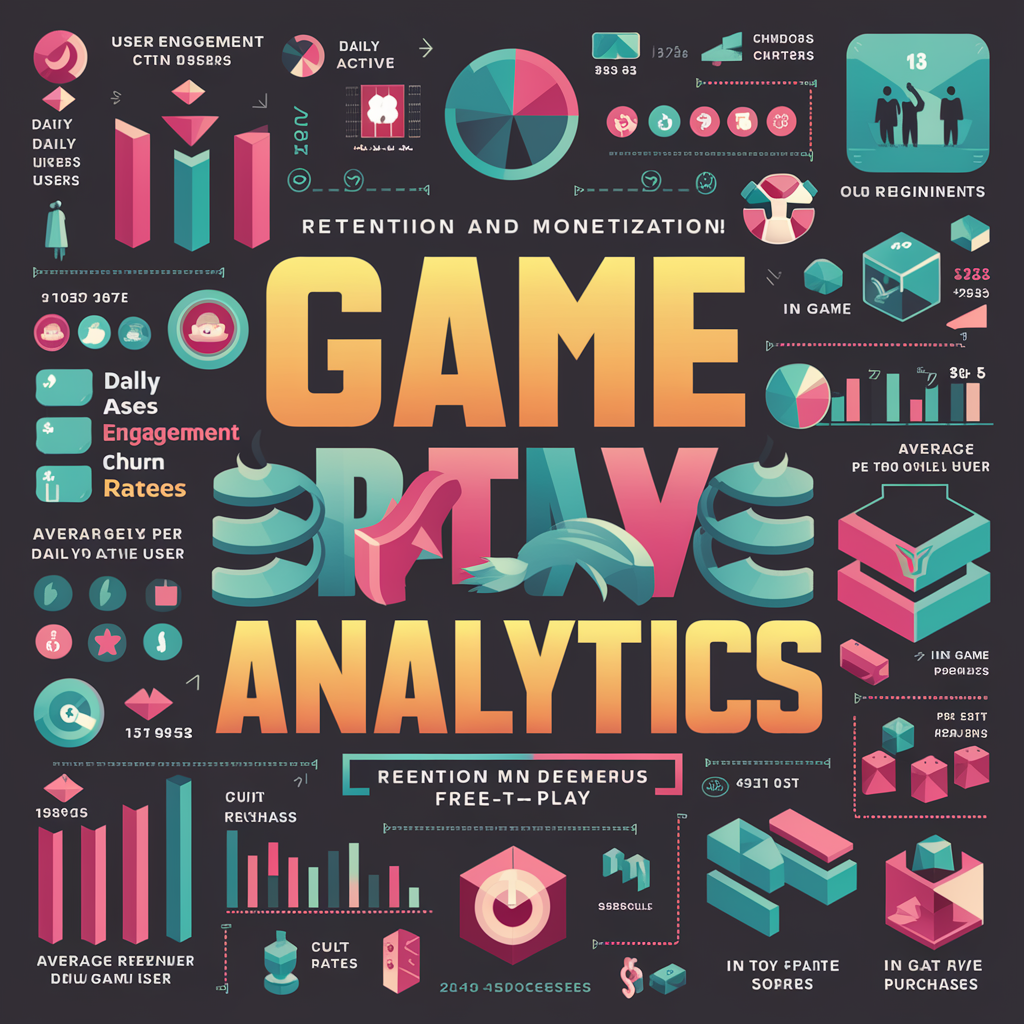Game analytics: retention and monetization in free-to-play games is a game-changer for developers. It helps studios understand what keeps players coming back and how to earn revenue without spoiling the player’s experience. For free-to-play games, where players don’t need to pay upfront, knowing how to engage and monetize is the secret to success.
Retention and monetization are two sides of the same coin. Retention means keeping players engaged and excited about your game over time. Monetization is how developers turn that engagement into earnings—without pushing players away. This post will break down how game analytics can help improve both retention and monetization while keeping players happy.
What Is Game Analytics: Retention and Monetization in Free-to-Play Games?
Game analytics: retention and monetization in free-to-play games is about using data to make games better for players and profitable for developers. It helps track what players do in the game, why they keep playing, and how much they spend.
For free-to-play games, this data is gold. Players don’t pay upfront, so it’s important to keep them engaged and find ways to earn money that feel fair. Game analytics shows what works and what doesn’t so developers can make smarter decisions.
Understanding retention and monetization helps create games players love and want to support. Developers use these insights to balance fun gameplay with effective earning strategies.
Why Retention Is the Foundation of Successful Free-to-Play Games

Retention means getting players to return to your game day after day. If players stop playing too soon, they’ll never spend money or tell their friends about the game.
Good retention starts with a great first impression. Players need to enjoy their first minutes in the game, so tutorials and early levels must be easy and fun. Game analytics can show where players quit, helping developers fix those problem areas.
Developers often use rewards like daily login bonuses to keep players coming back. Adding new content and events regularly also helps keep the game fresh. When players feel valued, they stick around longer.
The Role of Monetization in Free-to-Play Games Without Sacrificing Fun
Monetization in free-to-play games means earning money without making players feel forced to pay. It’s a tricky balance, but game analytics helps developers get it right.
Popular monetization strategies include in-app purchases and ads. In-app purchases should feel optional and rewarding, like buying cool costumes or unlocking extra levels. Ads work best when they offer something useful, like extra lives or free coins.
Game analytics shows which strategies work and which might annoy players. Developers can adjust prices, offers, or ad placements based on real player behavior, keeping the experience enjoyable.
Key Metrics to Track for Retention and Monetization
Game analytics: retention and monetization in free-to-play games rely on specific metrics. These numbers help developers understand how their game is performing.
Important Metrics Include:
Retention Rate: Tracks how many players return after their first day, week, or month.
Average Revenue Per User (ARPU): Measures how much money each player brings in.
Lifetime Value (LTV): Predicts how much a player will spend over time.
Developers use these metrics to see where they’re winning and where they need to improve. For example, a low retention rate might mean players find the game boring or hard to play.
Monetization Strategies That Keep Players Coming Back

Smart In-App Purchases
Offer items that make the game more fun but not unfair.
Keep prices reasonable to encourage spending.
Rewarded Ads
Give players extra benefits for watching ads, like free coins or boosts.
Make sure ads are short and not too frequent.
Seasonal Events and Offers
Use limited-time events to excite players.
Offer discounts or rare items during these events.
Conclusion
Game analytics: retention and monetization in free-to-play games help developers create games that players love while also making money. By studying player data, developers can find out what keeps users engaged and what makes them want to spend.
Free-to-play games succeed when they are fun, fair, and rewarding. With smart use of game analytics, developers can balance these elements, ensuring players enjoy the game for years while supporting its growth.
FAQs
Q: What is game analytics
A: Game analytics is the process of studying player data to improve a game’s retention and monetization.
Q: Why is retention important in free-to-play games
A: Retention keeps players coming back, which is key for building a strong player base and revenue.
Q: How can games monetize without upsetting players
A: By offering optional purchases and ads that add value, like extra rewards or fun items.
Q: What are key metrics in game analytics
A: Retention rate, average revenue per user (ARPU), and lifetime value (LTV) are crucial metrics.
Q: Can analytics improve player satisfaction
A: Yes, analytics help developers fix issues and create a better experience for players.




